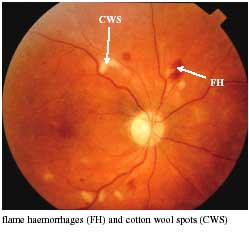DIABETIC MACROVASCULAR COMPLICATIONS AFFECTING THE EYE
Arteriosclerosis
In arteriosclerosis the tunica media thickens and the tunica intima fibroses. Hypertension is a major factor as is diabetes.
Retinal Vein Occlusion
The commonest cause of retinal vein occlusion is arteriosclerosis. In the eye arteries and veins frequently cross over each other. Where they cross over they share a common tunica adventitia resulting in the artery effectively being “tied” to the vein. If the artery thickens it cannot move away and the adjacent vein is compressed.
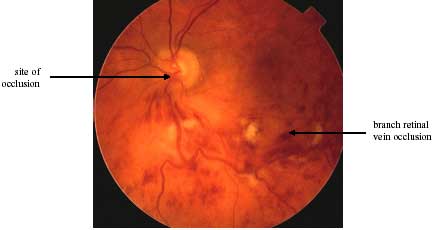
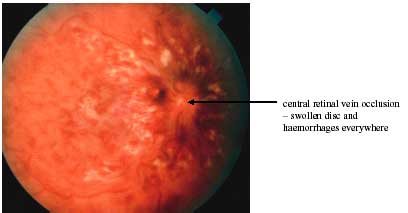
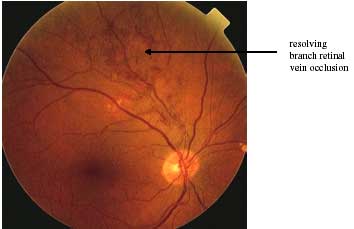
Patients with arteriosclerotic retinal vein occlusions are at increased risk of further retinal vein occlusions, and other arteriosclerotic events, particularly cerebrovascular accidents (stroke). In addition to the usual advice for people with diabetes, they should be advised to stop smoking and take.htmirin 75mg daily. Their total cholesterol levels should also be less than 5mmoll-1 or reduced by 25% whichever is the greater.
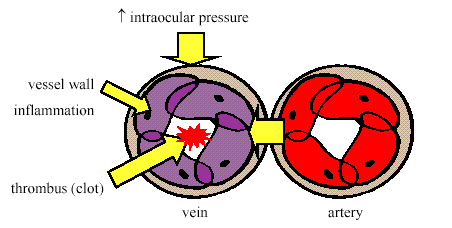
Other causes of retinal vein occlusion include raised intra-ocular pressure (glaucoma or intra-ocular hypertension), vessel wall inflammation (vasculitis) or systemic clotting disorders (thrombophilia). Vein occlusions are rare in young people and in this age group it is more likely that the vein occlusion will be a result of vasculitis or thrombophilia.
Arteriole occlusion
Bleeding of small arterioles in the nerve fibre layer leads to horizontal haemorrhages with blood tracking along the nerve fibres (“flame haemorrhages”). Infarction of the nerve fibre layer follows occlusion of pre-capillary arterioles leading to “cotton-wool spots”- so called because of their fluffy white appearance.
They represent the swollen ends of interrupted axons where build up of axoplasmic flow occurs at the edge of the infarct.
Causes of cotton wool spots include:
- Diabetes
- Hypertension
- Early worsening of diabetic retinopathy
- Severe hypoglycaemia
- Retinal vein occlusion
- Inflammatory disorders
- HIV retinopathy
- Bacterial endocarditis
